Simulation and Prediction of the Vickers Hardness of AZ91 Magnesium Alloy Using Artificial Neural Network Model
Abstract
:1. Introduction
2. Experimental Procedures
3. Artificial Neural Network (ANN)
4. Results and Discussion
5. Conclusions
- (1)
- The microstructure evolutions revealed that the mode of precipitation in AZ91 alloy was strongly affected by aging temperature and time of aging. The discontinuous precipitation was favored at low temperatures of aging (100 and 150 °C), while at high aging temperature (300 °C), continuous precipitation (CP) invaded all the samples. Both discontinuous and continuous precipitation reactions occurred at the intermediate aging temperature range (200−250 °C).
- (2)
- The variations in the age-hardening response of AZ91 alloy at various aging temperatures was clarified in view of the size, morphology, and distribution of the β-Mg17Al12 precipitates.
- (3)
- Based on the artificial neural network (ANN) model, simulated analysis showed a high correspondence with very low mean square error (MSE). The simulation results indicated higher precision of the operating model to the experimental data.
- (4)
- The prediction results of the ANN model were found to be in good agreement with the measured dataset.
- (5)
- The ANN model effectively simulated and predicted the age-hardening response of AZ91 magnesium alloy.
Author Contributions
Funding
Acknowledgments
Conflicts of Interest
Appendix A
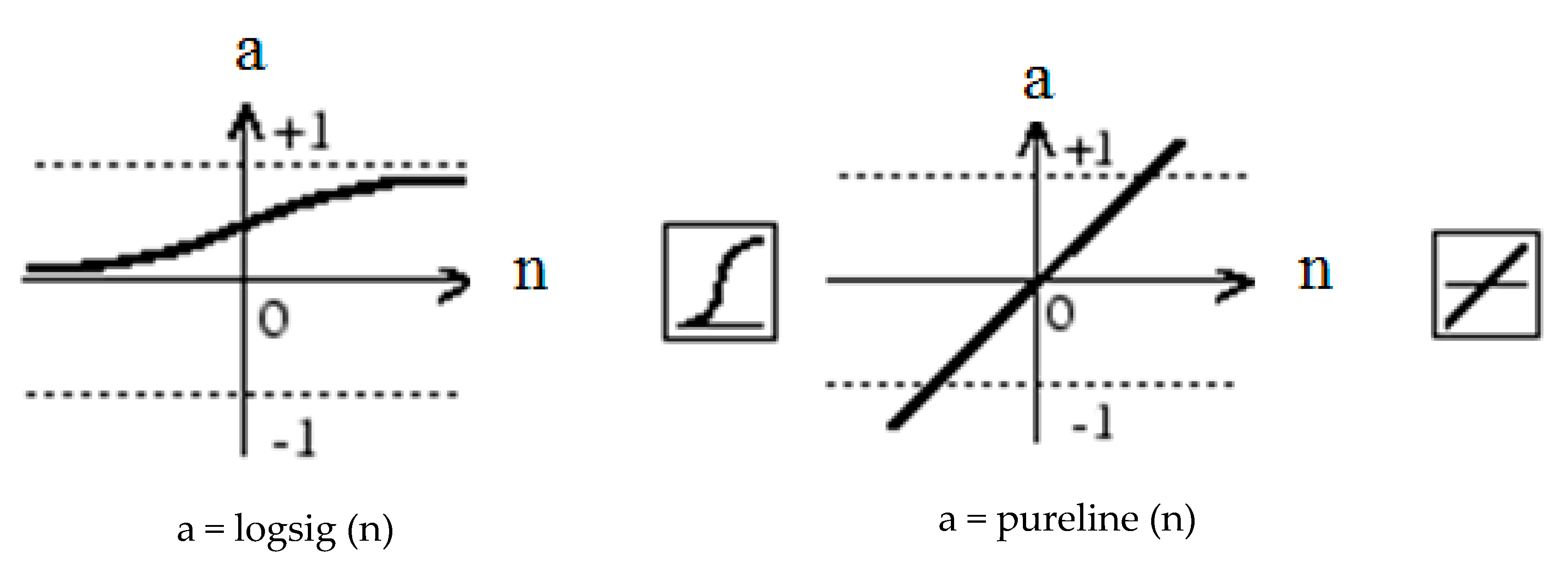
References
- Xiao, P.; Gao, Y.; Yang, X.; Xu, F.; Yang, C.; Li, B.; Li, Y.; Liu, Z.; Zheng, Q. Processing, microstructure and ageing behavior of in-situ submicronTiB2 particles reinforced AZ91 Mg matrix composites. J. Alloys Compd. 2018, 764, 96–106. [Google Scholar] [CrossRef]
- Kim, S.H.; Lee, J.U.; Kim, Y.J.; Bae, J.H.; You, B.S.; Park, S.H. Accelerated precipitation behavior of cast Mg-Al-Zn alloy by grain refinement. J. Mater. Sci. Technol. 2018, 34, 265–276. [Google Scholar] [CrossRef]
- Abd El-Rehim, A.F.; Zahran, H.Y.; Al-Masoud, H.M.; Habashy, D.M. Microhardness and microstructure characteristics of AZ91magnesium alloy under different cooling rate conditions. Mater. Res. Express 2019, 6, 086572. [Google Scholar] [CrossRef]
- Nie, J.F. Precipitation and hardening in magnesium alloys. Metall. Mater. Trans. A 2012, 43, 3891–3939. [Google Scholar] [CrossRef] [Green Version]
- Lee, J.U.; Kim, S.H.; Kim, Y.J.; Park, S.H. Effects of homogenization time on aging behavior and mechanical properties of AZ91 alloy. Mater. Sci. Eng. A 2018, 714, 49–58. [Google Scholar] [CrossRef]
- Jun, J.H. Dependence of hardness on interlamellar spacing of discontinuous precipitates in cast AZ91 magnesium alloy. J. Alloys Compd. 2017, 725, 237–241. [Google Scholar] [CrossRef]
- Srinivasan, A.; Ajithkumar, K.K.; Swaminathan, J.; Pillai, U.T.S.; Pai, B.C. Creep behavior of AZ91 magnesium alloy. Procedia Eng. 2013, 55, 109–113. [Google Scholar] [CrossRef] [Green Version]
- Braszczynska-Malik, K.N. Discontinuous and continuous precipitation in magnesium-aluminium type alloys. J. Alloys Compd. 2009, 477, 870–876. [Google Scholar] [CrossRef]
- Yu, S.; Gao, Y.; Liu, C.; Han, X. Effect of aging temperature on precipitation behavior and mechanical properties of extruded AZ80-Ag alloy. J. Alloys Compd. 2015, 646, 431–436. [Google Scholar] [CrossRef]
- Lai, W.J.; Li, Y.Y.; Hsu, Y.F.; Trong, S.; Wang, W.H. Aging behaviour and precipitate morphologies in Mg-7.7Al-0.5Zn-0.3Mn (wt.%) alloy. J. Alloys Compd. 2009, 476, 118–124. [Google Scholar] [CrossRef]
- Zhou, J.P.; Zhao, D.S.; Wang, R.H.; Sun, Z.F.; Wang, J.B.; Gui, J.N.; Zheng, O. In Situ observation of ageing process and new morphologies of continuous precipitates in AZ91 magnesium alloy. Mater. Lett. 2007, 61, 4707–4710. [Google Scholar] [CrossRef]
- Zhang, M.X.; Kelly, P.M. Crystallography of Mg17Al12 precipitates in AZ91D alloy. Scripta Materialia 2003, 48, 647–652. [Google Scholar] [CrossRef]
- Duly, D.; Simon, J.P.; Brechet, Y. On the competition between continuous and discontinuous precipitations in binary Mg-Al alloys. Acta Metallurgica Materialia 1995, 43, 101–106. [Google Scholar]
- Sahoo, B.N.; Panigrahi, S.K. Effect of In Situ (TiC-TiB2) reinforcement on aging and mechanical behavior of AZ91 magnesium matrix composite. Mater. Charact. 2018, 139, 221–232. [Google Scholar] [CrossRef]
- Celotto, S.; Bastow, T.J. Study of precipitation in aged binary Mg–Al and ternary Mg–Al–Zn alloys using 27Al NMR spectroscopy. Acta Materialia 2001, 49, 41–51. [Google Scholar] [CrossRef]
- Bastow, T.J.; Celotto, S. Clustering and formation of nano-precipitates in dilute aluminium and magnesium alloys. Mater. Sci. Eng. C 2003, 23, 757–762. [Google Scholar] [CrossRef]
- Xiuqing, Z.; Lihua, L.; Naiheng, M.; Haowei, W. Effect of aging hardening on In Situ synthesis magnesium matrix composites. Mater. Chem. Phys. 2006, 96, 9–15. [Google Scholar] [CrossRef]
- Robson, J.D.; Paa-Rai, C. The interaction of grain refinement and ageing in magnesium–zinc–zirconium (ZK) alloys. Acta Materialia 2015, 95, 10–19. [Google Scholar] [CrossRef] [Green Version]
- Li, J.H.; Barrirero, J.; Sha, G.; Aboulfadl, H.; Mücklich, F.; Schumacher, P. Precipitation hardening of an Mg–5Zn–2Gd–0.4Zr (wt.%) alloy. Acta Materialia 2016, 108, 207–218. [Google Scholar] [CrossRef]
- Xia, X.; Sun, W.; Luo, A.A.; Stone, D.S. Precipitation evolution and hardening in Mg-Sm-Zn-Zr alloys. Acta Materialia 2016, 111, 335–347. [Google Scholar] [CrossRef] [Green Version]
- Issa, A.; Saal, J.E.; Wolverton, C. Formation of high-strength β′ precipitates in Mg–RE alloys: The role of the Mg/β″ interfacial instability. Acta Materialia 2015, 83, 75–83. [Google Scholar] [CrossRef] [Green Version]
- Liu, H.; Xue, F.; Bai, J.; Zhou, J.; Sun, Y. Effects of heat treatments on microstructures and precipitation behaviour of Mg94Y4Zn2 extruded alloy. J. Mater. Sci. Technol. 2014, 30, 128–133. [Google Scholar] [CrossRef]
- Suresh, M.; Srinivasan, A.; Pillai, U.T.S.; Pai, B.C. The effect of charcoal addition on the grain refinement and ageing response of magnesium alloy AZ91. Mater. Sci. Eng. A 2011, 528, 8573–8578. [Google Scholar] [CrossRef]
- Ansari, M.A.; Behnagh, R.A.; Lin, D.; Kazeminia, S. Modelling of friction stir extrusion using artificial neural network (ANN). Int. J. Adv. Des. Manuf. Technol. 2018, 11, 1–12. [Google Scholar]
- Okuyucu, H.; Kurt, A.; Arcaklioglu, E. Artificial neural network application to the friction stir welding of aluminum plates. Mater. Des. 2007, 28, 78–84. [Google Scholar] [CrossRef]
- Asadi, P.; Givi, M.K.B.; Rastgoo, A.; Akbari, M.; Zakeri, V.; Rasouli, S. Predicting the grain size and hardness of AZ91/SiC nanocomposite by artificial neural networks. Int. J. Adv. Manuf. Technol. 2012, 63, 1095–1107. [Google Scholar] [CrossRef]
- Yousif, Y.K.; Daws, K.M.; Kazem, B.I. Prediction of friction stir welding characteristic using neural network. Jordan J. Mech. Ind. Eng. 2008, 2, 151–155. [Google Scholar]
- Ghetiya, N.D.; Patel, K.M. Prediction of tensile strength in friction stir welded aluminium alloy using artificial neural network. Procedia Technol. 2014, 14, 274–281. [Google Scholar] [CrossRef] [Green Version]
- Arunchai, T.; Sonthipermpoon, K.; Apichayakul, P.; Tamee, K. Resistance spot welding optimization based on artificial neural network. Int. J. Manuf. Eng. 2014, 2014, 1–6. [Google Scholar] [CrossRef] [Green Version]
- Habashy, D.M.; Mohamed, H.S.; El-Zaidia, E.F.M. A simulated neural system (ANNs) for micro-hardness of nano-crystalline titanium dioxide. Physica B 2019, 556, 183–189. [Google Scholar] [CrossRef]
- Voort, G.F.; James, H.M. Metal Handbook: Metallography and Microstructures; American Society for Metals: Russel Township, OH, USA, 1989; Volume 9, pp. 425–434. [Google Scholar]
- Abd El-Rehim, A.F.; Mahmoud, M.A. Transient and steady state creep of age-hardenable Al–5 wt% Mg alloy during superimposed torsional oscillations. J. Mater. Sci. 2013, 48, 2659–2669. [Google Scholar] [CrossRef]
- Celotto, S. TEM study of continuous precipitation in Mg–9 wt% Al–1 wt% Zn alloy. Acta Materialia 2000, 48, 1775–1787. [Google Scholar] [CrossRef]
- Abd El-Rehim, A.F. Effect of cyclic stress reduction on the creep characteristics of AZ91 magnesium alloy. Acta Metallurgica Sinica (Engl. Lett.) 2015, 28, 1065–1073. [Google Scholar] [CrossRef]
- Zheng, M.Y.; Wu, K.; Kamado, S.; Kojima, Y. Aging behavior of squeeze cast SiCw/AZ91 magnesium matrix composite. Mater. Sci. Eng. A 2003, 348, 67–75. [Google Scholar] [CrossRef]
- Duly, D.; Brechet, Y.; Chenal, B. Macroscopic kinetics of discontinuous precipitation in a Mg–8.5wt.% Al alloy. Acta Metallurgica Materialia 1992, 40, 2289–2300. [Google Scholar] [CrossRef]
- Manna, I.; Pabi, S.K.; Gust, W. Discontinuous reactions in solids. Int. Mater. Rev. 2013, 46, 53–91. [Google Scholar] [CrossRef]
- Robson, J.D. Modeling competitive continuous and discontinuous precipitation. Acta Materialia 2013, 61, 7781–7790. [Google Scholar] [CrossRef]
- Busk, R.S. Effect of temperature on the lattice parameters of magnesium alloys. JOM 1952, 4, 207–209. [Google Scholar] [CrossRef]
- Fatmi, M.; Djemli, A.; Ouali, A.; Chihi, T.; Ghebouli, M.A.; Belhouchet, H. Heat treatment and kinetics of precipitation of β-Mg17Al12 phase in AZ91 alloy. Res. Phys. 2018, 10, 693–698. [Google Scholar] [CrossRef]
- Han, G.M.; Han, Z.Q.; Luo, A.A.; Liu, B.C. Microstructure characteristics and effect of aging process on the mechanical properties of squeeze-cast AZ91 alloy. J. Alloys Compd. 2015, 641, 56–63. [Google Scholar] [CrossRef]
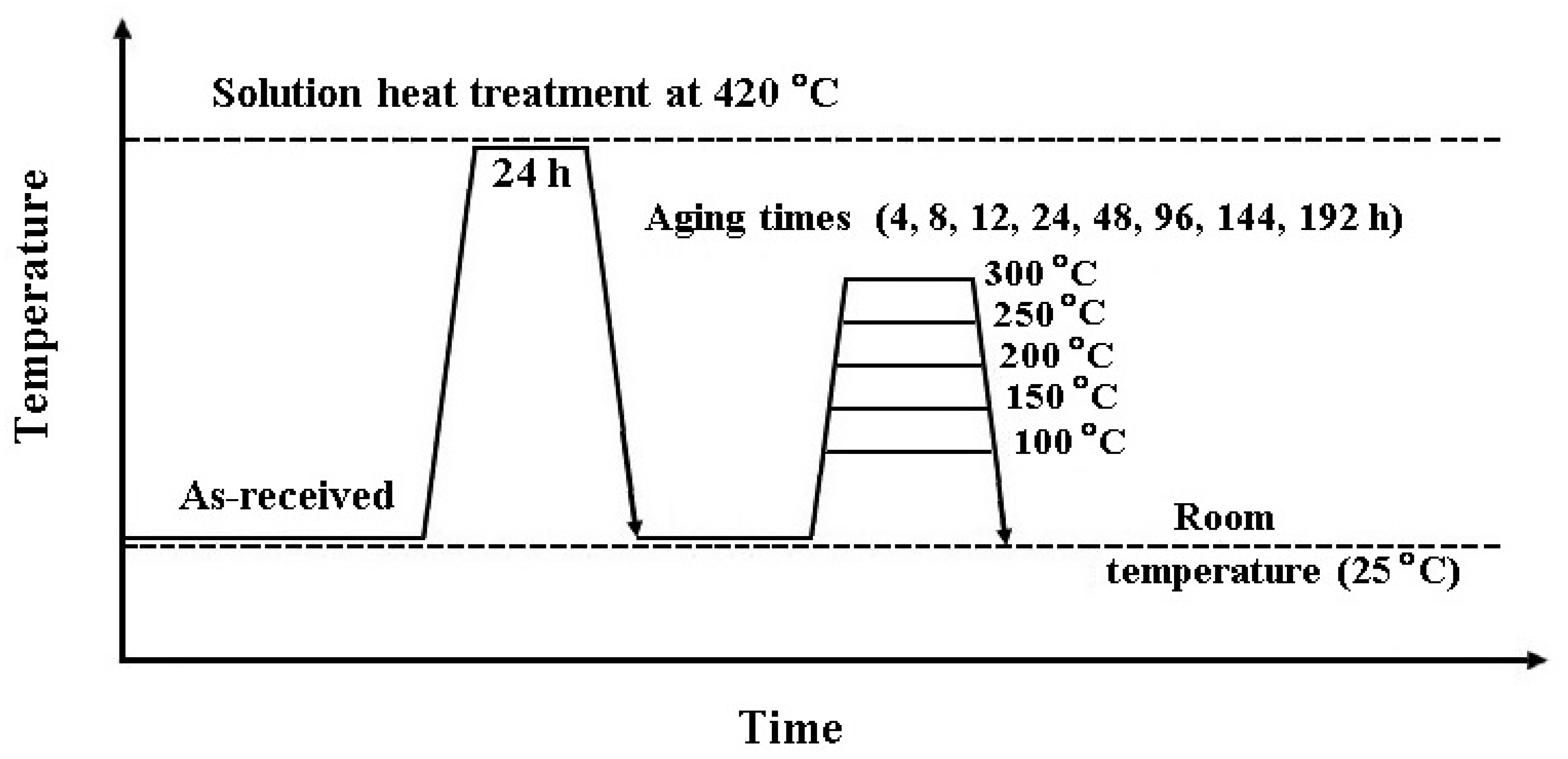
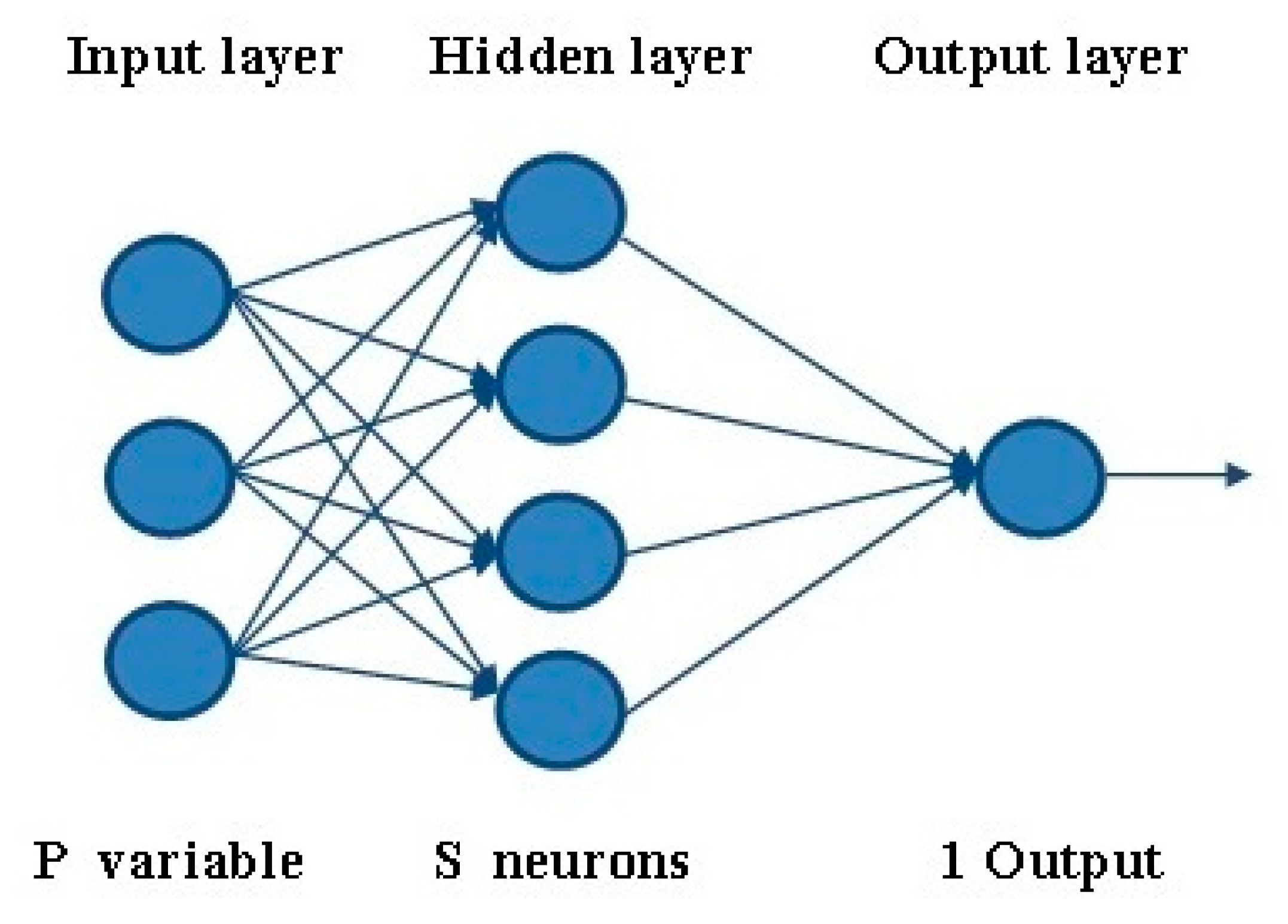



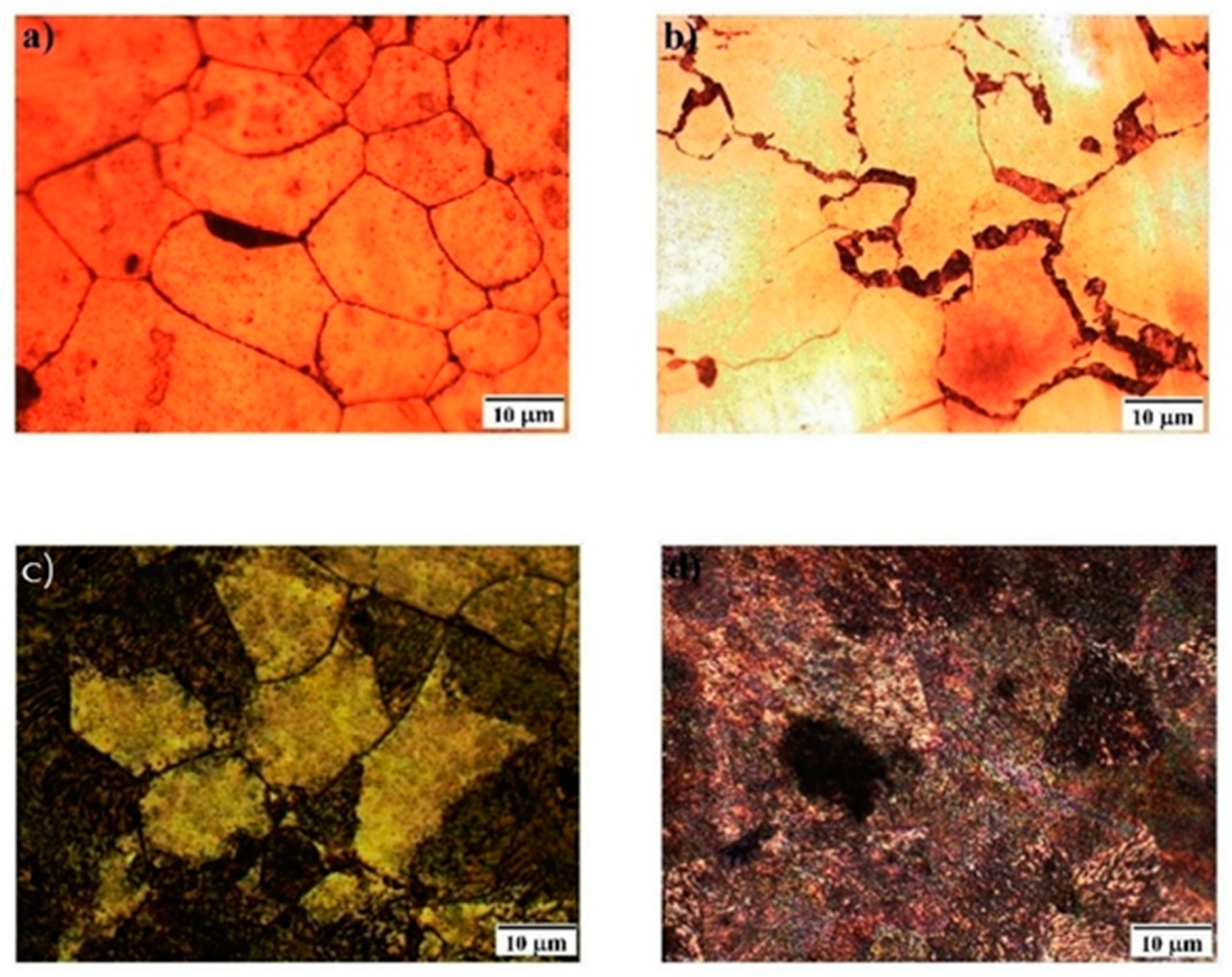
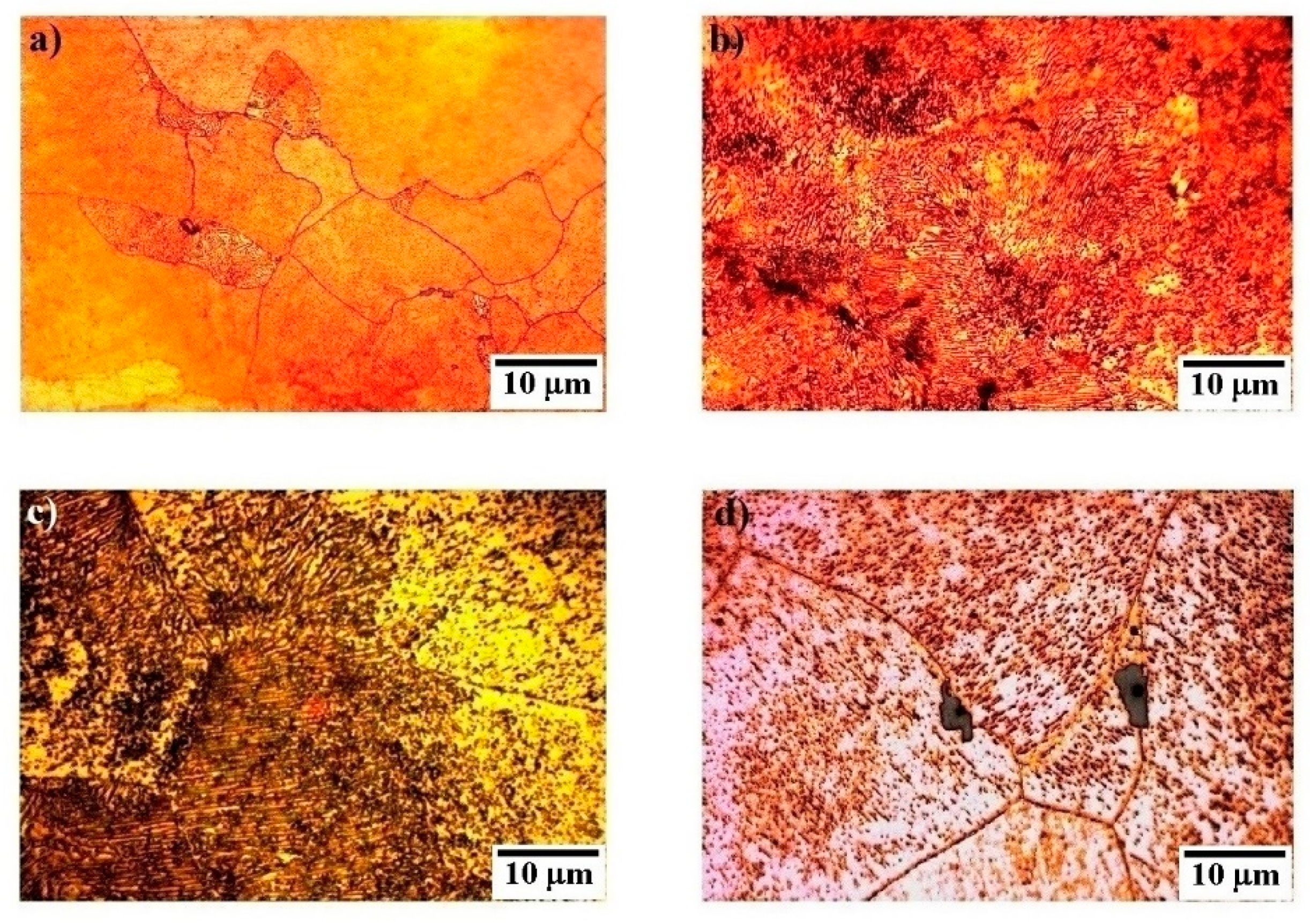



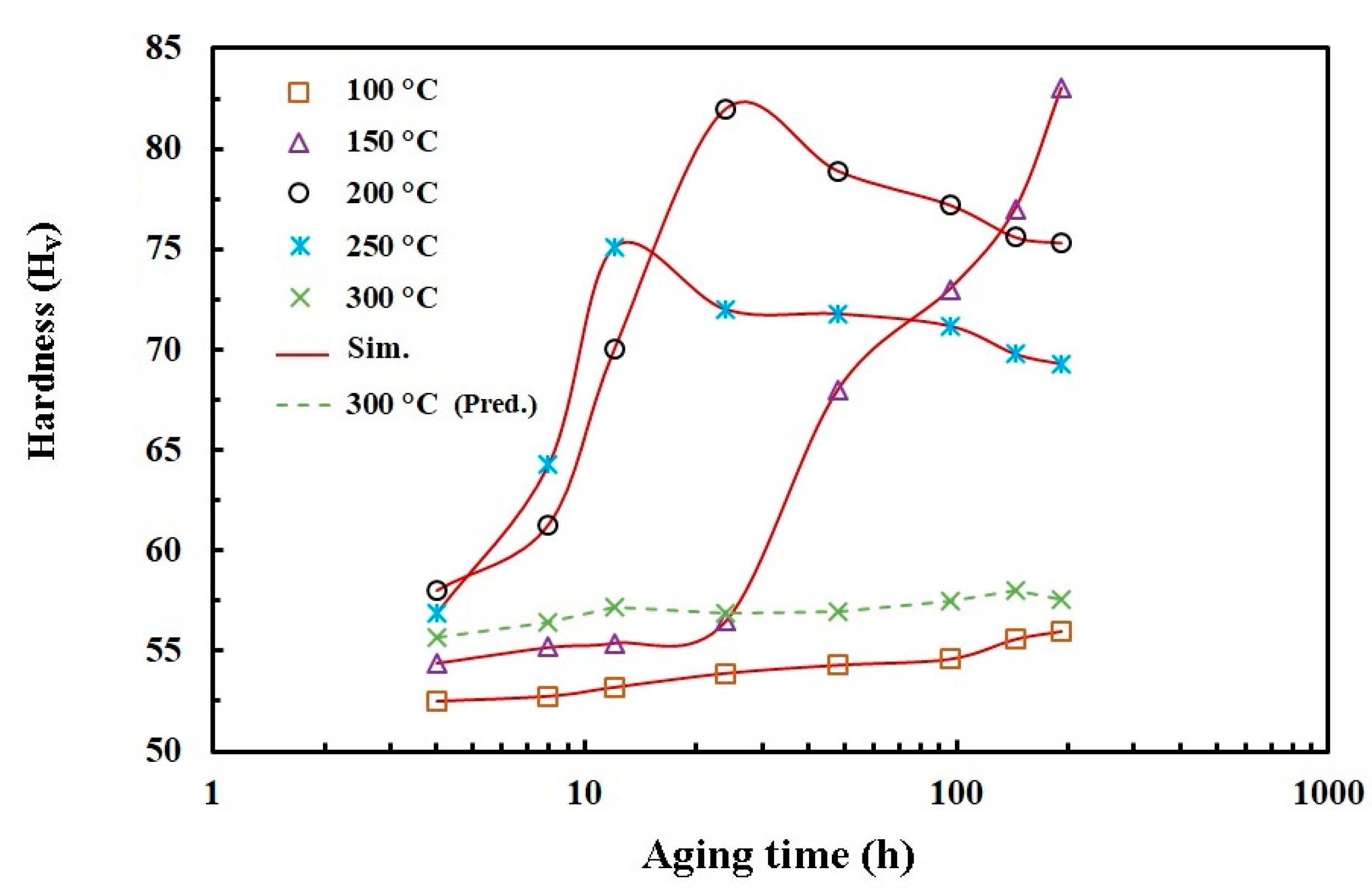
| Al | Zn | Mn | Si | Cu | Fe | Mg |
|---|---|---|---|---|---|---|
| 8.4 | 0.27 | 0.09 | <0.02 | <0.001 | <0.001 | Bal. |
| Aging Temperature (°C) | |||||||||||
|---|---|---|---|---|---|---|---|---|---|---|---|
| Lattice Parameter | Aging Time (h) | 100 | Error % | 150 | Error % | 200 | Error % | 250 | Error % | 300 | Error % |
| a (Å) | 4 | 3.175 | 1.03 | 3.179 | 0.9 | 3.194 | 0.43 | 3.19 | 0.56 | 3.183 | 0.79 |
| 8 | 3.176 | 0.99 | 3.18 | 0.87 | 3.197 | 0.34 | 3.2 | 0.25 | 3.184 | 0.75 | |
| 12 | 3.177 | 0.96 | 3.181 | 0.85 | 3.21 | 0.06 | 3.23 | 0.69 | 3.185 | 0.72 | |
| 24 | 3.179 | 0.9 | 3.183 | 0.78 | 3.24 | 0.99 | 3.216 | 0.24 | 3.186 | 0.69 | |
| 48 | 3.181 | 0.84 | 3.204 | 0.12 | 3.227 | 0.58 | 3.21 | 0.062 | 3.187 | 0.65 | |
| 96 | 3.182 | 0.81 | 3.212 | 0.125 | 3.22 | 0.37 | 3.207 | 0.0312 | 3.188 | 0.62 | |
| 144 | 3.183 | 0.78 | 3.224 | 0.499 | 3.22 | 0.37 | 3.205 | 0.0935 | 3.188 | 0.62 | |
| 192 | 3.184 | 0.75 | 3.229 | 0.655 | 3.22 | 0.37 | 3.205 | 0.0935 | 3.188 | 0.62 | |
| c (Å) | 4 | 5.213 | 0.058 | 5.21 | 0 | 5.19 | 0.384 | 5.21 | 0.192 | 5.213 | 0.115 |
| 8 | 5.211 | 0.019 | 5.205 | 0.084 | 5.1736 | 0.699 | 5.206 | 0.787 | 5.211 | 0.134 | |
| 12 | 5.21 | 0 | 5.206 | 0.077 | 5.17 | 0.768 | 5.206 | 0.576 | 5.21 | 0.154 | |
| 24 | 5.209 | 0.019 | 5.202 | 0.077 | 5.185 | 0.479 | 5.202 | 0.465 | 5.209 | 0.249 | |
| 48 | 5.208 | 0.038 | 5.198 | 0.154 | 5.196 | 0.269 | 5.198 | 0.384 | 5.208 | 0.269 | |
| 96 | 5.207 | 0.058 | 5.179 | 0.595 | 5.177 | 0.633 | 5.179 | 0.578 | 5.207 | 0.288 | |
| 144 | 5.206 | 0.077 | 5.168 | 0.806 | 5.17 | 0.768 | 5.168 | 0.595 | 5.206 | 0.326 | |
| 192 | 5.205 | 0.096 | 5.158 | 0.998 | 5.168 | 0.806 | 5.158 | 0.614 | 5.205 | 0.326 | |
| c/a | 4 | 1.642 | 1.098 | 1.639 | 0.912 | 1.625 | 0.053 | 1.630 | 0.371 | 1.635 | 0.683 |
| 8 | 1.641 | 1.027 | 1.637 | 0.796 | 1.618 | 0.357 | 1.615 | 0.539 | 1.634 | 0.618 | |
| 12 | 1.640 | 0.976 | 1.636 | 0.778 | 1.611 | 0.829 | 1.604 | 1.253 | 1.633 | 0.567 | |
| 24 | 1.639 | 0.893 | 1.634 | 0.631 | 1.600 | 1.463 | 1.613 | 0.703 | 1.631 | 0.439 | |
| 48 | 1.637 | 0.81 | 1.622 | 0.106 | 1.610 | 0.853 | 1.617 | 0.446 | 1.630 | 0.388 | |
| 96 | 1.636 | 0.759 | 1.612 | 0.719 | 1.608 | 1.004 | 1.6151 | 0.547 | 1.629 | 0.338 | |
| 144 | 1.635 | 0.708 | 1.603 | 1.298 | 1.606 | 1.138 | 1.616 | 0.502 | 1.628 | 0.299 | |
| 192 | 1.634 | 0.657 | 1.597 | 1.642 | 1.605 | 1.176 | 1.6156 | 0.521 | 1.628 | 0.299 | |
| Aging Temperature (°C) | ||||||||||
|---|---|---|---|---|---|---|---|---|---|---|
| Aging Time (h) | 100 | 150 | 200 | 250 | 300 | |||||
| Exp. | Sim. | Exp. | Sim. | Exp. | Sim. | Exp. | Sim. | Exp. | Pred. | |
| 4 | 52.50 | 52.48 | 54.40 | 54.40 | 58.00 | 58.00 | 56.90 | 56.88 | 56.00 | 55.70 |
| 8 | 52.70 | 52.74 | 55.21 | 55.19 | 61.21 | 61.30 | 64.30 | 64.25 | 56.80 | 56.40 |
| 12 | 53.20 | 53.18 | 55.40 | 55.40 | 70.00 | 70.00 | 75.12 | 75.10 | 57.00 | 57.15 |
| 24 | 53.89 | 53.89 | 56.50 | 56.50 | 82.00 | 81.95 | 72.00 | 72.00 | 57.20 | 56.86 |
| 48 | 54.30 | 54.29 | 68.11 | 68.00 | 78.90 | 78.89 | 71.80 | 71.80 | 57.90 | 56.93 |
| 96 | 54.60 | 54.60 | 73.00 | 73.00 | 77.23 | 77.20 | 71.25 | 71.21 | 57.90 | 57.50 |
| 144 | 55.60 | 55.59 | 77.00 | 76.90 | 75.58 | 75.60 | 69.80 | 69.80 | 57.90 | 58.01 |
| 192 | 56.00 | 56.00 | 83.00 | 82.90 | 75.33 | 75.30 | 69.30 | 69.30 | 57.90 | 57.56 |
© 2020 by the authors. Licensee MDPI, Basel, Switzerland. This article is an open access article distributed under the terms and conditions of the Creative Commons Attribution (CC BY) license (http://creativecommons.org/licenses/by/4.0/).
Share and Cite
Abd El-Rehim, A.F.; Zahran, H.Y.; Habashy, D.M.; Al-Masoud, H.M. Simulation and Prediction of the Vickers Hardness of AZ91 Magnesium Alloy Using Artificial Neural Network Model. Crystals 2020, 10, 290. https://doi.org/10.3390/cryst10040290
Abd El-Rehim AF, Zahran HY, Habashy DM, Al-Masoud HM. Simulation and Prediction of the Vickers Hardness of AZ91 Magnesium Alloy Using Artificial Neural Network Model. Crystals. 2020; 10(4):290. https://doi.org/10.3390/cryst10040290
Chicago/Turabian StyleAbd El-Rehim, Alaa F., Heba Y. Zahran, Doaa M. Habashy, and Hana M. Al-Masoud. 2020. "Simulation and Prediction of the Vickers Hardness of AZ91 Magnesium Alloy Using Artificial Neural Network Model" Crystals 10, no. 4: 290. https://doi.org/10.3390/cryst10040290





